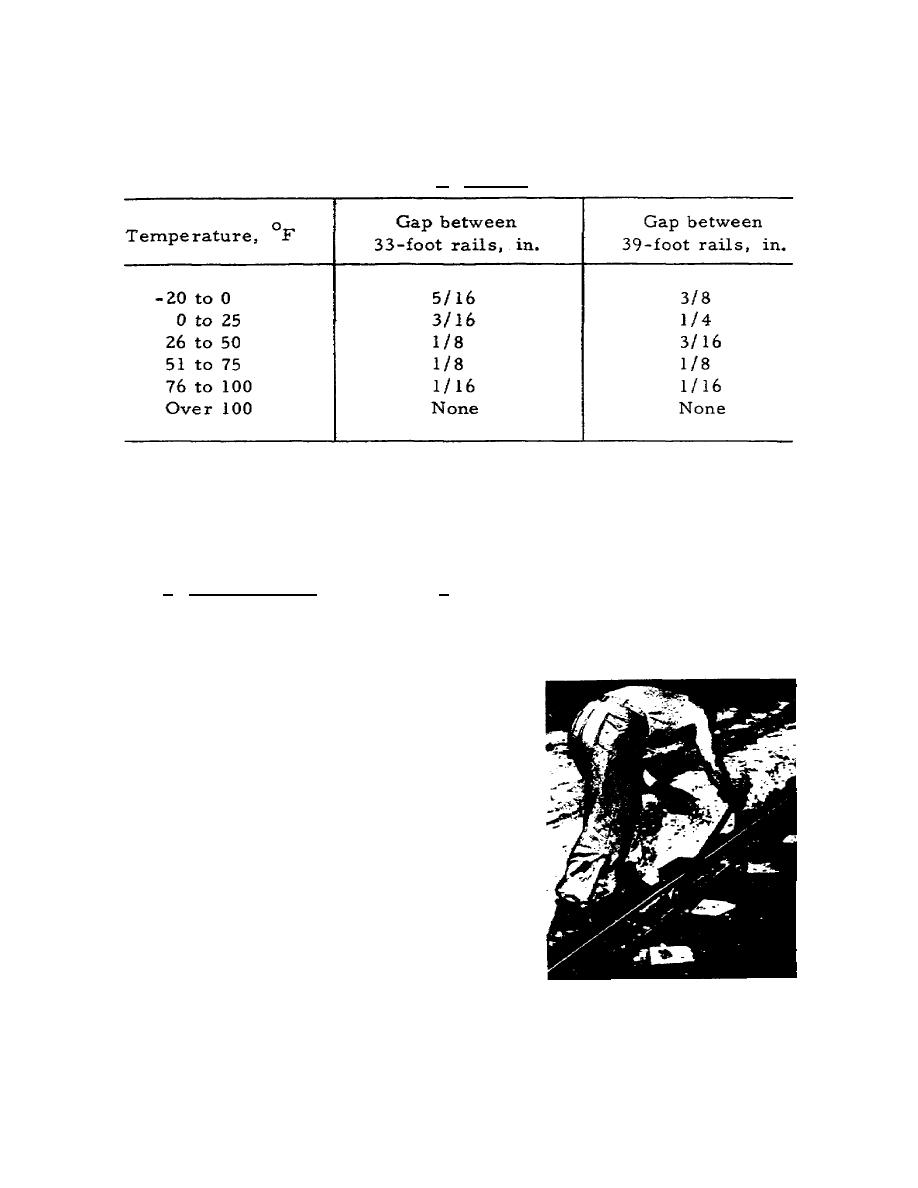
the joint. The space provided depends on the prevailing temperature as well as upon the length
of rail used, as table V shows.
Table V. Rail Gap
The space is usually established by placing a wooden shim of the correct dimension
between the rail ends. The shim may be left in place as it is soon crushed when the rails
expand. If a metal shim is used, it must be removed after the rails are fastened because it will
interfere with expansion.
b. Applying the bars. Paragraph 3.25b, which describes track bolts, states that on heavy
rail the boltheads alternate from outside to inside of the rail and that on light rail they do not.
As you direct your crew in applying the joint bars, check to make sure that the standard practice
in locating the boltheads for your road is being followed for the weight of rail you are laying.
The bars are in place and the crew has run the
bolts through the holes and put on the washers and the
nuts. Now comes the crucial tightening of the bolts,
either with power or hand wrenches. In the insert, track
bolts are being tightened with a hand wrench. Providing
tension in track bolts draws the bars into place when they
are first applied and holds the bars in place so that the two
working together resist bending. This initial tightening
should provide enough re-serve so that retightening will not
be
67



 Previous Page
Previous Page
